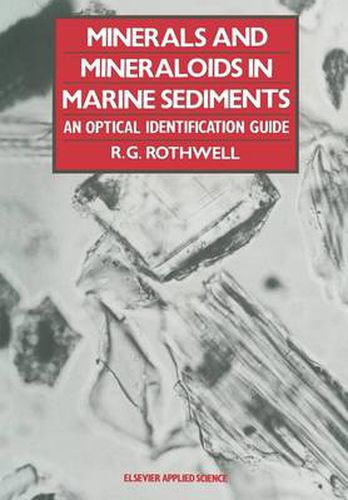Readings Newsletter
Become a Readings Member to make your shopping experience even easier.
Sign in or sign up for free!
You’re not far away from qualifying for FREE standard shipping within Australia
You’ve qualified for FREE standard shipping within Australia
The cart is loading…






This title is printed to order. This book may have been self-published. If so, we cannot guarantee the quality of the content. In the main most books will have gone through the editing process however some may not. We therefore suggest that you be aware of this before ordering this book. If in doubt check either the author or publisher’s details as we are unable to accept any returns unless they are faulty. Please contact us if you have any questions.
Over 60% of the Earth’s surface is covered with deep marine sediments, however, until the early 1980s, no comprehensive text books appeared to support the rapid expansion in the study of these sediments. While the whole field of marine geology has expanded enormously and entirely new disciplines, such as paleoceanography, have been developed, there remains a lack of reference texts on study techniques that investigators in the marine community can turn to. Minerals and Mineraloids in Marine Sediments is an optical identifica tion guide that I believe will become a standard reference text for use in the microscope analysis of marine sediment& and sedimentary rocks. The systematic collection of sediment cores from the deep ocean floor began in earnest with the Swedish Deep Sea Expedition, 1947-1948. Much of the microscopic examination of the sediments collected in these piston cores (10 m+ long) was conducted on separated grain mounts or thin sections of impregnated sediments. By the late 1960s a simpler technique of examining a mounted smear of the cored silt and clay size sediment on a microscope slide had become standard practice in American oceanographic institutions. This semi quantitative technique became the standard tool used in core description aboard Glomar Challenger through the 15 years of the Deep Sea Drilling Project (DSDP), 1968-1983. Visual percentage estimates of biogenic and mineral components were made using petrologic micro scopes.
$9.00 standard shipping within Australia
FREE standard shipping within Australia for orders over $100.00
Express & International shipping calculated at checkout
This title is printed to order. This book may have been self-published. If so, we cannot guarantee the quality of the content. In the main most books will have gone through the editing process however some may not. We therefore suggest that you be aware of this before ordering this book. If in doubt check either the author or publisher’s details as we are unable to accept any returns unless they are faulty. Please contact us if you have any questions.
Over 60% of the Earth’s surface is covered with deep marine sediments, however, until the early 1980s, no comprehensive text books appeared to support the rapid expansion in the study of these sediments. While the whole field of marine geology has expanded enormously and entirely new disciplines, such as paleoceanography, have been developed, there remains a lack of reference texts on study techniques that investigators in the marine community can turn to. Minerals and Mineraloids in Marine Sediments is an optical identifica tion guide that I believe will become a standard reference text for use in the microscope analysis of marine sediment& and sedimentary rocks. The systematic collection of sediment cores from the deep ocean floor began in earnest with the Swedish Deep Sea Expedition, 1947-1948. Much of the microscopic examination of the sediments collected in these piston cores (10 m+ long) was conducted on separated grain mounts or thin sections of impregnated sediments. By the late 1960s a simpler technique of examining a mounted smear of the cored silt and clay size sediment on a microscope slide had become standard practice in American oceanographic institutions. This semi quantitative technique became the standard tool used in core description aboard Glomar Challenger through the 15 years of the Deep Sea Drilling Project (DSDP), 1968-1983. Visual percentage estimates of biogenic and mineral components were made using petrologic micro scopes.